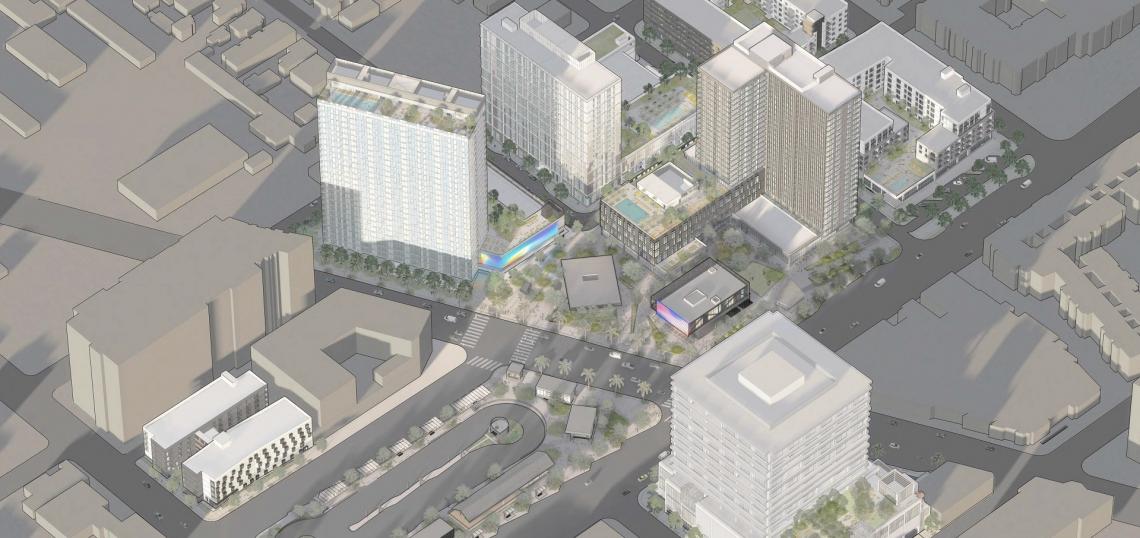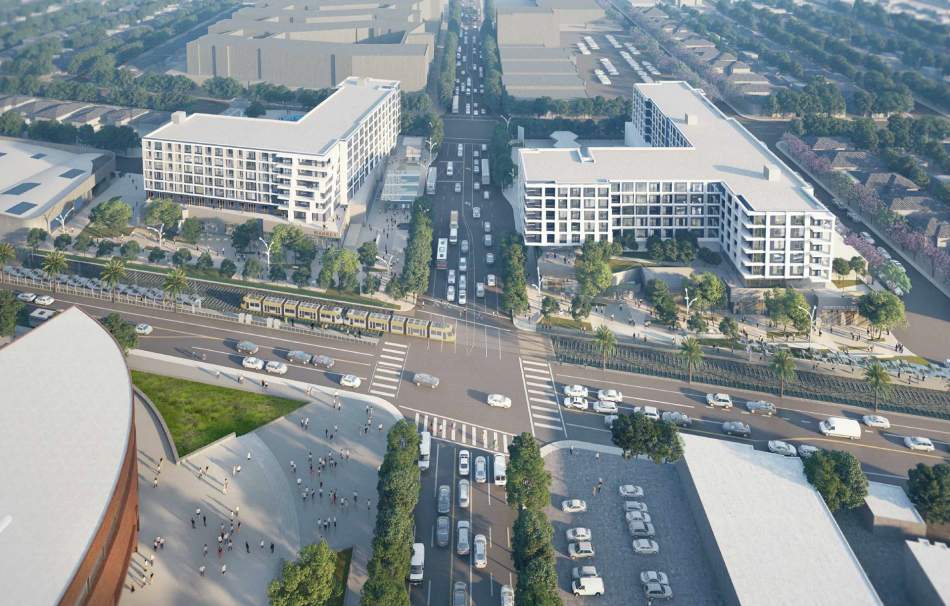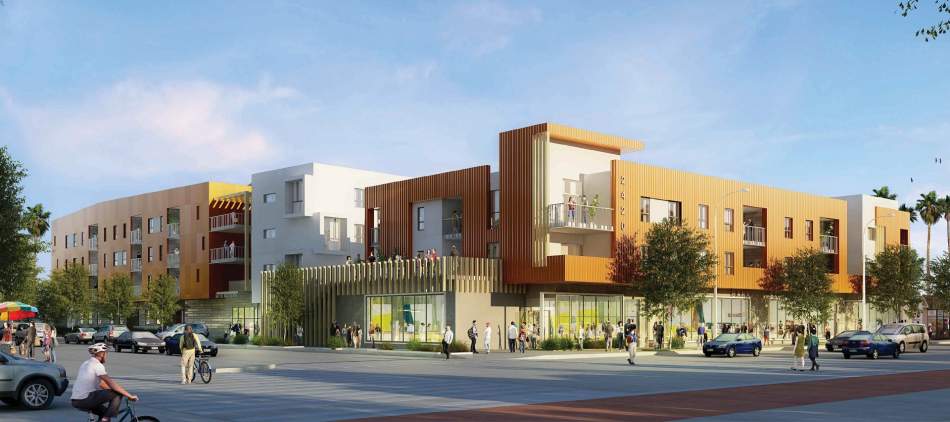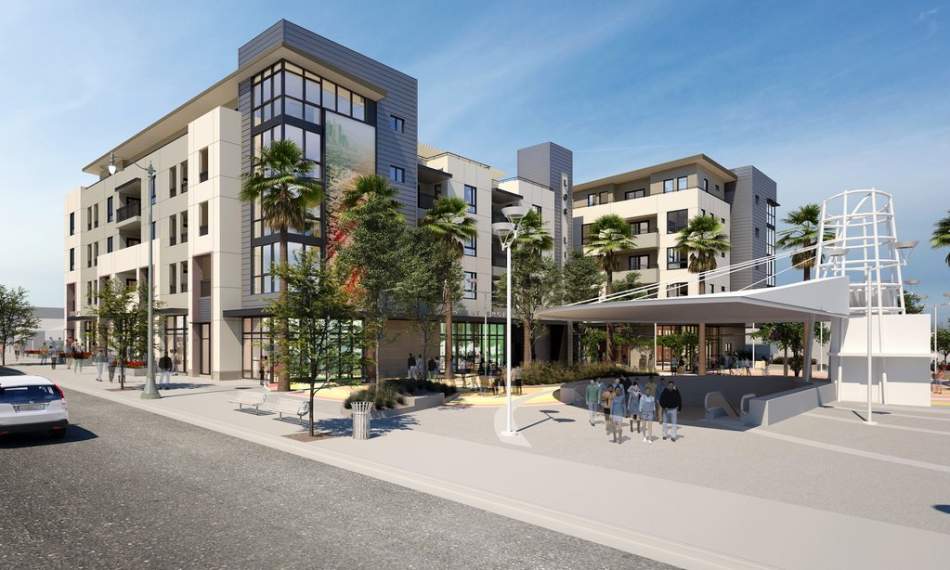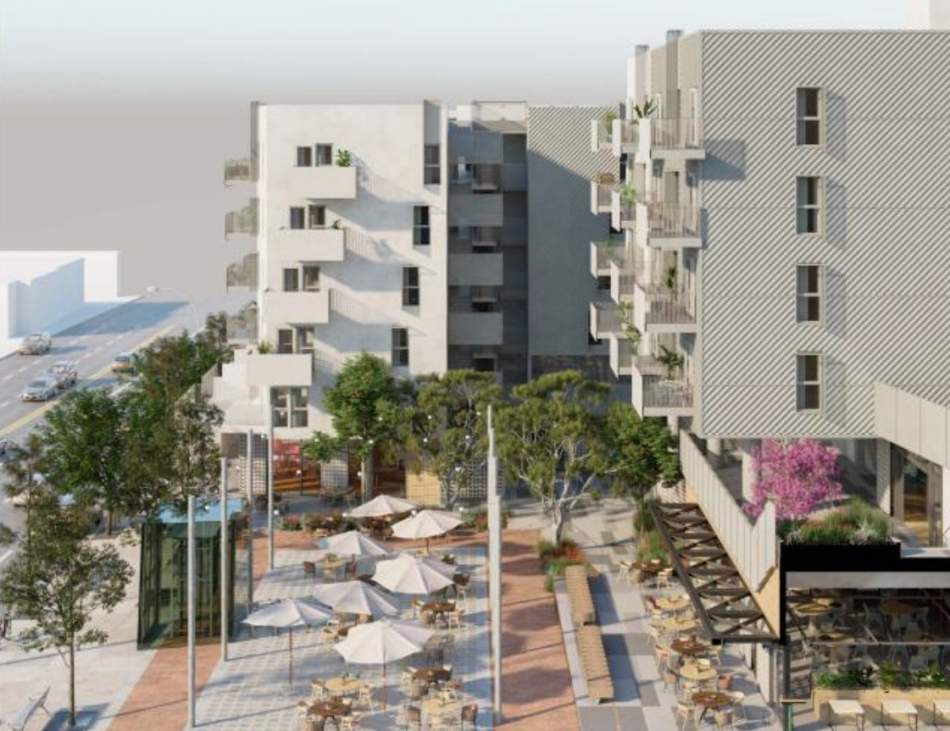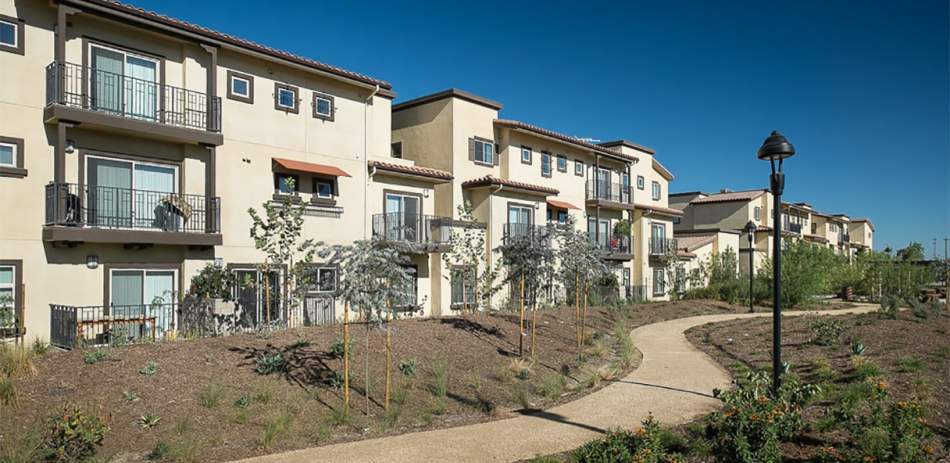A study presented yesterday to the Metro Board's Planning Committee recommends a series of updates to the transportation agency's joint development program.
Metro's joint developments, which are projects built by third-party entities on agency-owned land, include numerous affordable apartment communities, as well as landmark properties such as the Hollywood & Highland Center. To date, more than 20 joint development have been completed, and at least 10 more are either planned or under construction.
Metro's playbook for joint developments is its joint development policy (JD policy), which was last updated by the Board of Directors in 2015. Under the current policy, Metro has set a goal of reserving at least 35 percent of the residential units in its real estate portfolio for households earning less than 60 percent of the area median income (AMI).
However, despite some temporary relief resulting from the economic conditions of the COVID-19 pandemic, the cost of housing has continued to rise over the past six years in Los Angeles County. A 2019 study by the McKinsey Global Institute found that the average Angeleno spends nearly half of their income on rent - well above the common suggestion that a household spend no more than 30 percent of income on rent. The cost of housing is estimated to depress the County's gross domestic product by roughly five percent - or $30 billion - each year.
As a result of a slew of new rail and bus rapid transit projects slated to break ground in the coming decade, Metro is expected to add more than 40 new properties to its real estate portfolio - effectively doubling the number of potential joint developments. This growing pipeline of projects is described in the report as an opportunity to "lead the region in progressive, innovative, community-serving housing and other inclusive community benefits."
Metro's slate of future development opportunities overlaps with another potentially monumental shift in regional planning - SCAG's updated regional housing needs assessment (RHNA). The Metro staff report cites a current deficit of 350,000 residential units across Los Angeles County as of 2020, including more than 100,000 needed for households earning below 50 percent of the area median income and 50,000 for households earning between 50 and 80 percent of the area median income.
The report, which builds off of stakeholder outreach and a review of policies at peer transit agencies across the United States, recommends the following strategies in the update to the joint development program:
Affordable first: prioritize 100 percent income-restricted projects for joint development sites
An exception to this policy would be for larger "district" sites - capable of housing 300 or more units - where economics and zoning supports mixed-income and high-rise construction. Metro expects that this will account for less than 10 of 50 future joint development sites.
Properties that are too small to accommodate 300 units, but are also deemed infeasible to support 100 percent affordable housing, are to be considered on a case-by-case basis.
Expand the definition of "affordable" to include households earning up to 80 percent of the area median income, and include "moderate income" households earning between 80 and 120 percent of AMI
Although the report acknowledges a high level of need for households earning below 60 percent of the area median income, Metro's existing policies do not provide opportunities for households in the 50 to 80 percent and 80 to 120 percent ranges. An expansion of the affordability definition to range as high as 80 percent would potentially permit joint development projects to take advantage of state and local density bonus programs - such as the City of Los Angeles' Transit Oriented Communities incentives - to provide additional affordable units without public subsidy.
Use "neighborhood AMI" to set affordability targets for projects to ensure affordability levels adequately serve the surrounding community
The overall Los Angeles County AMI scale may not align with the median income neighborhoods for individual neighborhoods, sometimes resulting in existing residents being "priced out" of new affordable housing developments.
Require mixed-income projects to achieve an "affordability score" equivalent to setting aside 25 percent of units for households earning 80 percent of AMI or less
This could allow joint developments to make use of existing incentive laws to create new affordable housing at no additional cost to Metro. Projects providing greater levels of affordability could adjust the percentage of units set aside for below market-rate rents to work within the framework of various density bonus programs.
Eliminate the land discount except when required to offset cost for affordable units
According to the staff report, land discounts offered by Metro may in some cases simply be substitutes for other state and federal subsidies available ot developers. The revenue saved from limiting the use of discounts could be reinvested in other housing or mobility projects.
Require unbundled parking on all sites and allow a maximum of .5 parking spaces per bedroom (or no more than the minimum parking requirement by local land use regulations)
A study commissioned by Metro found that transit-oriented developments in the United States are overparked by an average of 30 percent. Unbundled parking has been pitched as a way to let market demand - rather than zoning - dictate how much parking is built by developers.
Likewise, reducing the requirement for on-site parking could also cut the cost of new joint developments, and potentially produce more housing. A 2019 report from design firm WGI’s Parking Solutions division found that the average cost of a new parking garage in Los Angeles is more than $24,000 per vehicle stall.
Reinvest proceeds from joint development projects into an affordable housing trust fund and other efforts to support developments on Metro properties
Joint development proceeds are currently deposited into Metro's General Fund, according to the report.
Revise property acquisition strategy for joint development potential
To control costs, Metro typically limits land acquisition to the properties needed for construction, often leaving oddly shaped or undersized properties for joint developments. Strategically expanding the area of acquisition in certain cases could result in more viable development sites.
Ensure joint development projects prioritize community-serving, local, legacy businesses or community-serving non-profits for ground-floor retail space
Require flexible lease terms, favorable rental prices, and other incentives.
Prioritize projects located in areas at higher risk of displacement
Use data collected by the County or other organizations to create an early increase in affordable housing supply before displacement occurs.
Following the presentation of the staff report to the Planning Committee, Metro Board member and Los Angeles City Councilmember Mike Bonin urged caution in how staff would implement neighborhood-specific targets for AMI.
“I don’t want a neighborhood formula that makes [price points] even higher,” said Bonin, who noted that the median income in wealthier communities on the Westside surpasses the countywide number. “I think the approach is that we only use neighborhood AMI if it’s lower than the County’s AMI.”
Metro is currently soliciting feedback on the policies included in the staff report, and has scheduled a town hall discussion for March. Feedback and thoughts can be e-mailed to jointdevelopment@metro.net.




